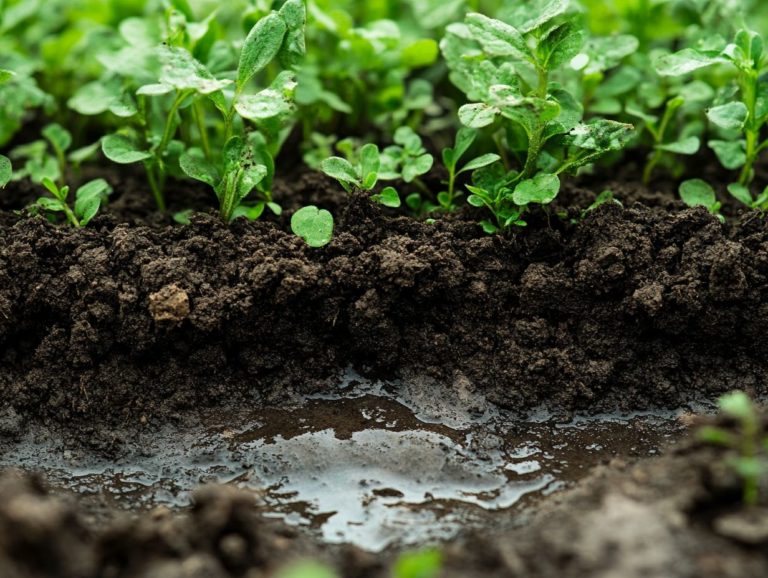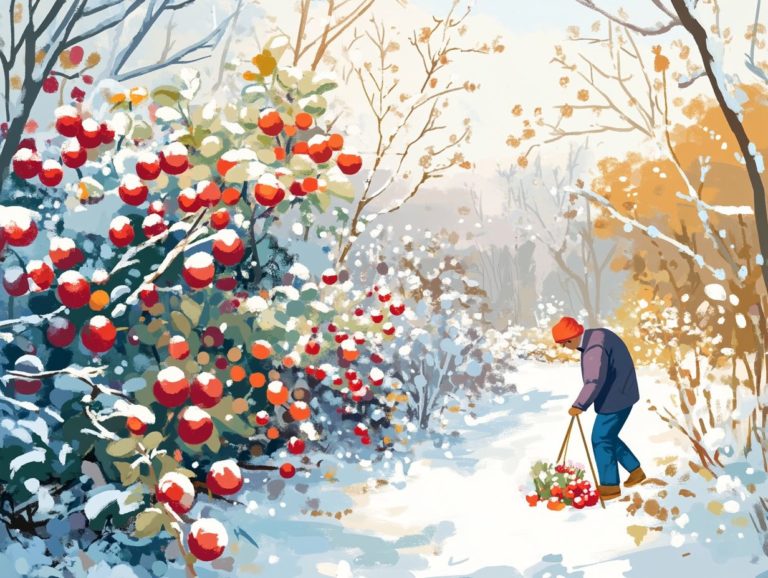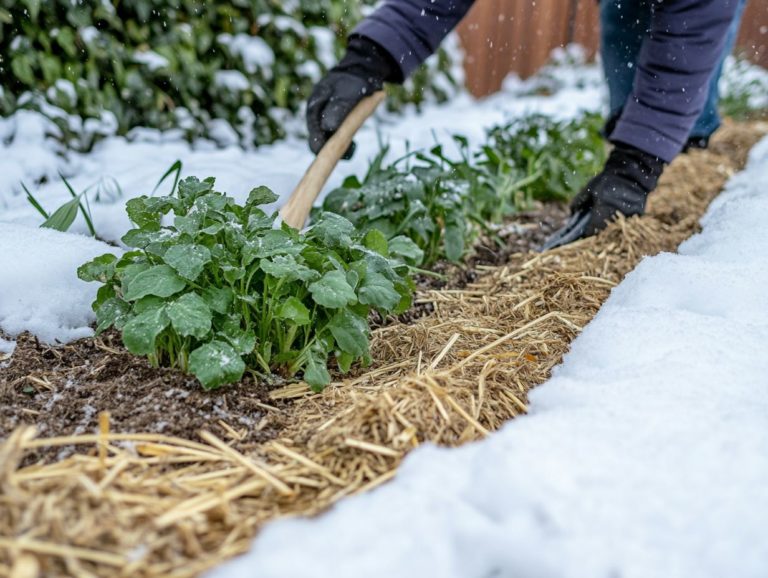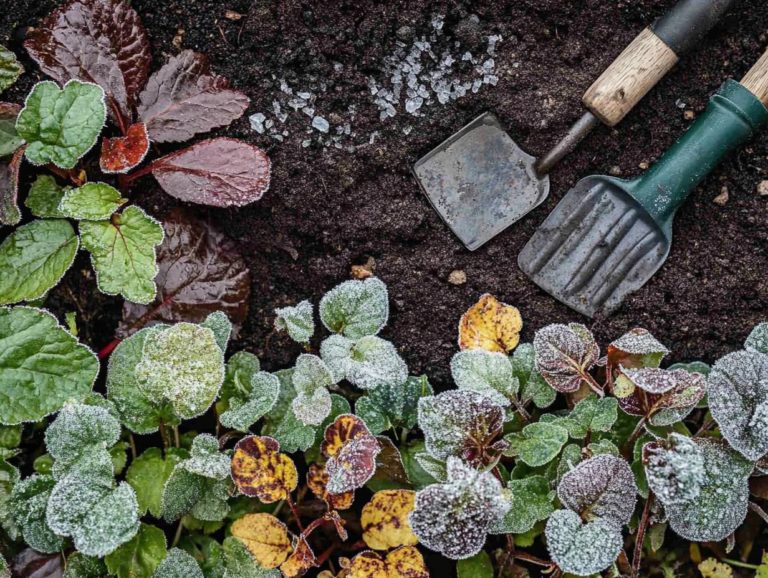How to Keep Your Garden Tools from Freezing?
As winter approaches, safeguarding your garden tools is crucial to prevent costly damage and keep them in top working condition.
Freezing temperatures can wreak havoc on even the sturdiest tools, causing rust, cracks, or even complete failure.
This article explores the importance of protecting your tools and provides practical strategies for winter storage, along with alternatives to keep them safe.
It also discusses how to handle unexpected freezing conditions and restore any tools that may have suffered from the cold.
By following these essential tips, you can ensure your gardening gear is ready for a thriving spring.
Contents
- Key Takeaways:
- Why is it Important to Protect Garden Tools from Freezing?
- Preventive Measures for Winter Storage
- Alternative Storage Options
- Dealing with Unexpected Freezing Conditions
- Thawing and Restoring Frozen Tools
- Frequently Asked Questions About Garden Tool Care
- How do I keep my garden tools from freezing in winter and properly store them?
- Can I leave my garden tools outside during winter, or is it better to use protective measures?
- What can I do if I lack space to store my garden tools indoors?
- Will covering my garden tools with a tarp be enough to keep them from freezing and prevent rust?
- How often should I check on my garden tools during the winter?
- What products can I use to protect my garden tools from freezing?
Key Takeaways:

- Regular cleaning and maintenance of garden tools can help prevent damage from freezing temperatures and save you from costly replacements.
- Consider alternative storage options, such as bringing tools indoors or insulating them, to protect them from unexpected freezing conditions.
- If your tools do freeze, follow proper techniques and safety precautions when thawing and restoring them.
Why is it Important to Protect Garden Tools from Freezing?
Protecting your garden tools from freezing temperatures is essential for their longevity and optimal performance. Neglecting this crucial step can expose them to harsh winter conditions, leading to significant damage like rust on metal blades and deterioration of wooden handles. To ensure your tools are well-maintained during the colder months, check out this guide on how to maintain your gardening tools in winter.
This not only compromises your tools’ effectiveness but can also result in costly replacements that are easily avoidable with a few simple preventive measures. In harsh winter areas like Iowa, protecting your tools is vital for dedicated gardeners.
By implementing effective strategies, you can keep your tools in pristine condition, ready for action come gardening season.
Potential Damage and Cost of Replacing Tools
The potential damage from freezing conditions can lead to significant replacement costs. Metal blades are prone to rust, while wooden handles may crack and splinter, forcing you to replace them entirely an expense that can strain your gardening budget.
Understanding these risks allows you to prioritize tool care during winter, saving money while keeping your cherished tools in working order. Failing to protect your tools can also lead to brittle plastic components breaking under stress.
Estimates suggest you might spend anywhere from $50 to over $200 to replace a single damaged tool, depending on its type and quality. For instance, high-end pruners can often cost around $100 or more.
Industry studies indicate that maintaining your tools can save you up to 30% on replacement costs annually. This financial benefit highlights the importance of regular maintenance, including proper cleaning and storage, to extend the life of your essential gardening equipment.
Preventive Measures for Winter Storage
Implementing effective preventive measures for winter storage is essential to prevent rust and extend the lifespan of your garden tools. A well-organized winter storage routine involves thoroughly cleaning your tools to remove dirt and moisture that can lead to corrosion if left unchecked.
Practicing proper maintenance like using oil for lubricating metal blades and treating wooden handles will significantly reduce the risk of damage during harsh winter months. Arranging your tools in an accessible manner saves you time and effort in the busy gardening season, ensuring everything is in optimal condition when spring arrives.
Cleaning and Maintenance Tips
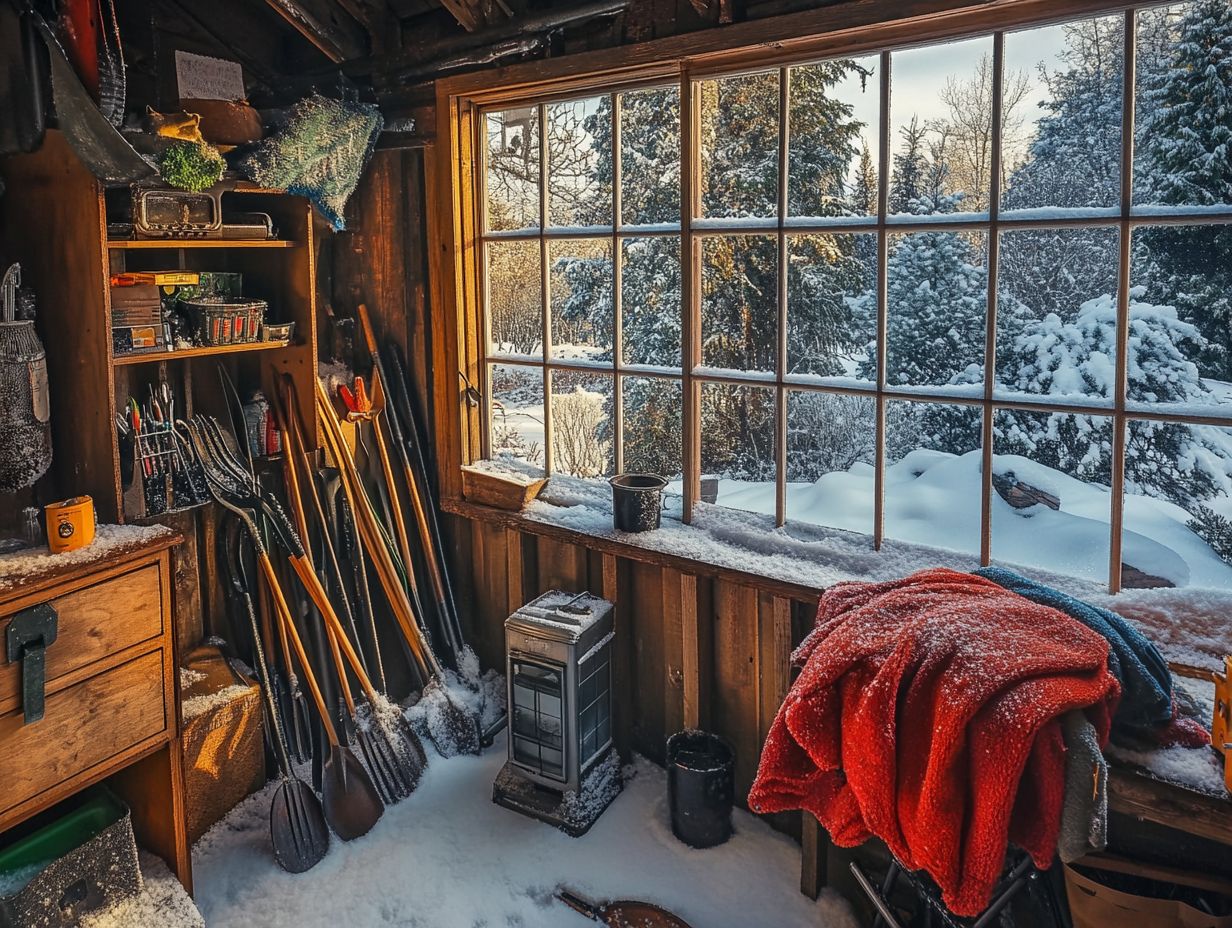
Cleaning and maintaining your garden tools isn’t just a seasonal task; it’s a vital practice for longevity and performance. Start with a careful inspection, removing dirt and rust, and applying oil that helps tools move smoothly to metal blades.
Use effective techniques to keep your tools in great shape! For cleaning metal blades, a wire brush works wonders to eliminate rust and residue. Once cleaned, a light coating of oil not only helps them operate smoothly but also protects against further corrosion.
Wooden handles need a gentle approach. Use a damp cloth followed by a specialized wood conditioner to seal moisture and prevent wear. Regularly check the tightness of bolts and screws to keep your tools safe and effective.
Alternative Storage Options
Explore alternative storage options to enhance protection for your garden tools during the winter months. Consider indoor storage methods and insulation techniques for an optimal environment. For comprehensive guidance, check out how to winterize your garden. Utilize frost-resistant pots and cold-resistant plants to store your tools indoors, away from harsh outdoor elements.
Insulating your tools with bubble wrap or placing them on pot feet will safeguard against freezing temperatures and moisture accumulation. This thoughtful approach keeps your garden tools well-preserved and ready for action when spring arrives.
Indoor Storage and Insulation Techniques
Indoor storage and insulation techniques are essential to protect your garden tools from freezing conditions. For tips on this, check out how to organize your gardening tools for winter. Wrap metal blades and wooden handles in bubble wrap to create a barrier against cold air. Ensure your storage containers have proper drainage to prevent moisture buildup.
Organize tools in insulated cabinets or sheds for more protection against extreme temperatures. Implement a few additional strategies to enhance this protection.
Use moisture-absorbing silica gel packets in your storage areas to combat humidity and reduce the risk of rust. Position tools away from colder walls to help mitigate freezing temperatures.
A dehumidifier in your storage space can maintain optimal humidity levels, providing a thorough approach to preventing damage. By combining these techniques, ensure your tools weather the winter with resilience.
Dealing with Unexpected Freezing Conditions
Act fast when freezing conditions hit! Start by assessing the situation; inspect your tools for any frost and moisture, and decide if adjustments to your storage methods are needed.
Taking emergency measures, like moving your tools to a warmer environment, can greatly cut the chance of damage and keep your tools in top condition this winter. Knowing how to respond effectively protects your investment and saves you time and money in the long run.
Emergency Steps to Protect Tools

When you encounter unexpected freezing conditions, knowing the right emergency steps to protect your garden tools is essential to prevent irreversible damage. Start by quickly checking your tools for signs of frost and assessing for rust or corrosion on metal blades. For detailed guidance, refer to these winter gardening tool maintenance tips.
It s important to carefully inspect each tool and ensure that no moisture has infiltrated vulnerable areas, which could lead to further deterioration. If you find any tools already frozen, gently thaw them indoors. Avoid harsh temperature swings that might cause cracking or warping.
Once thawed, clean the tools thoroughly to eliminate any residual moisture. Use effective sharpening techniques to keep those blades sharp; a fine sharpening stone can work wonders in restoring edges dulled by exposure.
By attending to these emergency procedures promptly, you can enhance the longevity and performance of your gardening tools, making them more resilient against future frosty challenges.
Thawing and Restoring Frozen Tools
Thawing and restoring frozen garden tools requires a careful method, emphasizing proper techniques and safety measures to preserve their integrity and extend their lifespan.
Gradually warming your tools in a controlled environment is crucial. Steer clear of direct heat sources that could warp metal or harm wooden parts. It s wise to wear protective gloves and secure your tools during the thawing process to minimize the risk of accidents.
After thawing, conduct a thorough inspection and perform necessary maintenance to ensure your tools are ready for optimal performance as the gardening season approaches.
Proper Techniques and Safety Precautions for Garden Tools
Using proper techniques and safety precautions during the thawing and restoration of frozen tools is essential to avoid further damage and ensure their effectiveness. Regular cleaning tools and proper maintenance can help prolong their lifespan.
To achieve the best results, place your tools in an environment where natural warmth can circulate think near a heater or in a sunlit spot. Avoid direct heat sources like a stovetop, as they can lead to uneven melting.
It’s also crucial to inspect your tools for any existing damage before starting the thawing process. A quick check can prevent minor issues from escalating.
Once your tools have reached a safe temperature, take the time to clean them thoroughly to remove any ice remnants. Don t forget to apply a suitable lubricating oil a special oil used to keep moving parts running smoothly. These steps will prepare your tools for action and extend their lifespan, ensuring they perform beautifully in your upcoming gardening projects.
Frequently Asked Questions About Garden Tool Care
How do I keep my garden tools from freezing in winter and properly store them?

One way to prevent your garden tools from freezing is to bring them indoors during the colder months. For proper winter storage, refer to this guide on how to store garden tools for winter and find a dry and warm spot in your garage or shed to keep them.
Can I leave my garden tools outside during winter, or is it better to use protective measures?
It is not recommended to leave your garden tools outside during winter, as they can easily freeze and become damaged. If you must leave them outside, consider using bubble wrap or tarps for added protection.
What can I do if I lack space to store my garden tools indoors?
If you don’t have enough space indoors, try wrapping your garden tools in a tarp or plastic sheet to protect them from freezing. Use absorbent material in your storage area to help prevent moisture.
Will covering my garden tools with a tarp be enough to keep them from freezing and prevent rust?
While covering your garden tools can help protect them from freezing, it’s also important to ensure they are clean and dry before storing them. For those interested in DIY solutions, learning how to make your own cold-weather gardening tools can also help prevent rust and prolong the life of your metal blades and wooden handles.
Protect your tools today and enjoy a thriving garden this spring!
How often should I check on my garden tools during the winter?
Check your garden tools regularly in winter. This prevents moisture buildup, which can lead to rust.
If you spot any rust, use WD-40 to clean and dry them thoroughly.
What products can I use to protect my garden tools from freezing?
Consider using anti-freeze sprays and linseed oil. These products help keep your tools safe from freezing.
Follow the instructions closely and apply them only to the metal parts of your tools.

